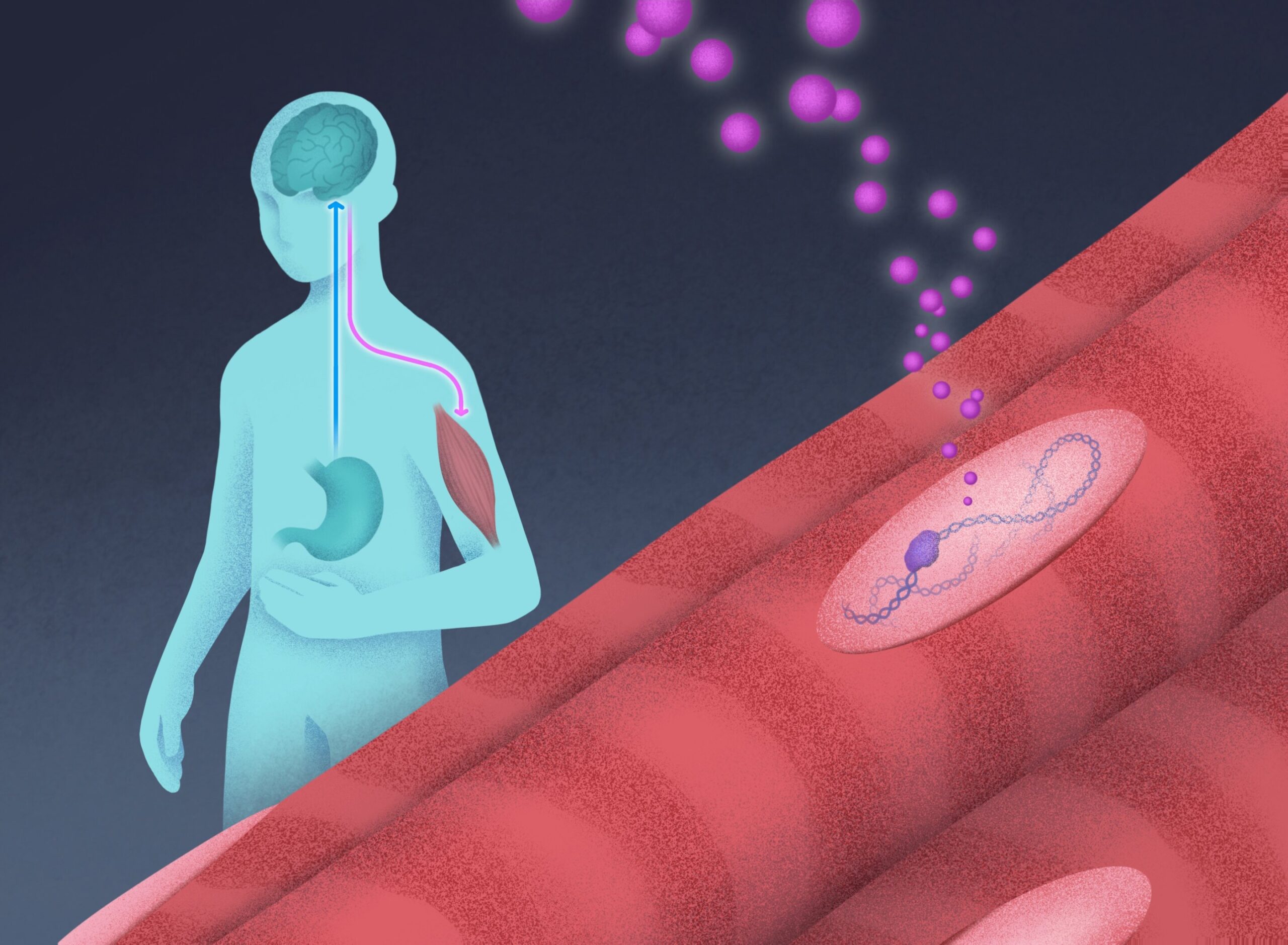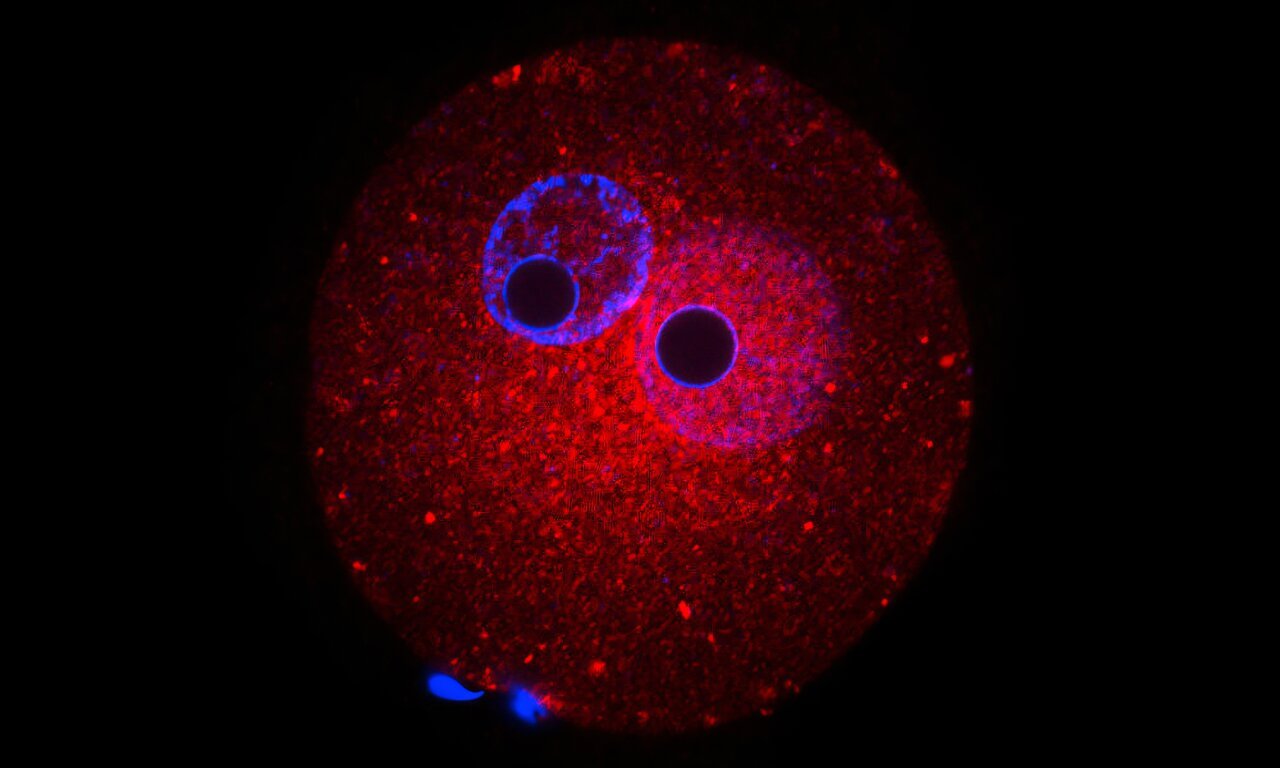One in eight adults in the United States has tried or is currently using a GLP-1 medication, with about a quarter of those users seeking weight loss as their primary goal. While these medications, typically prescribed for diabetes or obesity, have been effective in helping patients shed pounds, they bring an unintended consequence—substantial muscle loss. This is a pressing concern, as muscle is an essential component of our overall health and metabolic function. But now, new research from the Salk Institute is shedding light on a potential way to prevent muscle loss during weight reduction.
The study highlights BCL6, a protein identified as playing a critical role in maintaining muscle mass. The Salk team’s experiments found that low levels of BCL6 result in diminished muscle mass and strength, while increasing BCL6 expression in muscle cells can reverse those losses. This breakthrough suggests that by pairing GLP-1 medications with BCL6-boosting interventions, it may be possible to preserve muscle during weight loss—an issue not only for patients on weight loss medications but also for older adults and individuals suffering from illnesses like cancer or sepsis, all of whom may experience muscle wasting.
Understanding GLP-1 Drugs and the Muscle Loss Concern
GLP-1 medications, including popular drugs like semaglutide and liraglutide, mimic a natural hormone in the body that helps regulate glucose levels and control appetite. This makes them effective tools for weight loss. As these medications help patients lose fat, however, they may inadvertently cause muscle loss—a problem that has not been fully addressed in clinical settings. A significant portion of the weight lost on GLP-1 medications can be muscle rather than just fat, leading to a scenario where patients are thinning in all the wrong places. Muscle mass is crucial not just for physical strength, but for overall metabolic function and mobility, especially as we age. Losing lean muscle puts individuals at risk for weakness, fatigue, reduced endurance, and a lowered metabolic rate, which may undo the benefits of the weight loss itself. Thus, finding a way to safeguard muscle mass while using these medications is critical for a healthier weight loss process.
The Role of BCL6 in Muscle Maintenance
In response to this problem, researchers at the Salk Institute focused on BCL6, a protein previously not well-known for its role in muscle regulation but one that showed up prominently in muscle cells upon examining large-scale human tissue samples. The findings from their research might offer a promising solution.
BCL6 is found to play a significant part in maintaining muscle mass by controlling the levels of SOCS2, a protein that regulates IGF1 (insulin-like growth factor 1), which in turn affects muscle growth and repair. Under normal conditions, BCL6 keeps SOCS2 in check, ensuring that IGF1 levels remain within a healthy range—enough to support muscle growth but not so much as to cause abnormal tissue growth. When BCL6 levels drop, this balance is disrupted, leading to a reduction in muscle strength and mass.

The study found that mice lacking functional BCL6 experienced 40% less muscle mass than normal mice, with their muscle tissues showing structural and functional impairments. However, when the researchers increased BCL6 expression in the muscles of these mice, it successfully reversed the muscle loss, restoring muscle strength and mass. This experiment suggested that BCL6 acts as a master regulator in the body’s process of muscle maintenance.
Furthermore, the research demonstrated that fasting, which is often a component of weight-loss strategies, appears to reduce BCL6 levels in muscles. This reduction could, in turn, impair muscle maintenance by allowing SOCS2 to interfere with IGF1 production, exacerbating the muscle loss associated with both fasting and GLP-1 use.
How BCL6 Works in Concert with Growth Hormones
A key mechanism driving muscle growth and maintenance involves growth hormone. When the body is deprived of food for an extended period, it enters a fasted state. In response, the stomach produces ghrelin, a hormone that signals hunger to the brain. In turn, the brain releases growth hormone, which activates cells throughout the body to stimulate various functions, including muscle growth.
Once released, growth hormone travels through the bloodstream and binds to receptors on muscle cells. This activation prompts muscle cells to produce IGF1, which plays an essential role in promoting cell growth, including muscle regeneration and repair. However, for IGF1 to be produced effectively, there must be a balance in other proteins that regulate its synthesis—especially SOCS2, which either accelerates or decelerates the production of IGF1.
SOCS2’s role is critical: it blocks IGF1 production when levels become too high or when the body is receiving signals to reduce growth. But, as this study revealed, BCL6 acts as an upstream regulator. When growth hormone is released during fasting or weight loss, it leads to a reduction in BCL6 levels, triggering SOCS2 production, which in turn lowers IGF1 levels and stunts muscle maintenance. In mice that lacked BCL6, muscle mass and function were dramatically reduced due to the ensuing regulatory mishap with SOCS2 and IGF1. In contrast, boosting BCL6 levels restored muscle growth by better controlling this feedback loop.
Towards Practical Applications
So, what does all of this mean for people trying to lose weight using GLP-1 medications? The key takeaway is that enhancing BCL6 levels could provide a potential therapy to counteract the muscle loss that so often accompanies weight reduction. By boosting BCL6, perhaps through an injectable treatment, it may be possible to protect muscle mass during weight loss, helping patients achieve healthier, more sustainable results.
The potential for clinical applications extends far beyond the scope of weight-loss medications alone. Older adults, as well as patients suffering from sepsis, cancer, or chronic illnesses, often experience accelerated muscle wasting, making BCL6 a potential target for therapies aimed at reversing this muscle loss. Researchers are keen to explore this area further, with hopes that increasing BCL6 activity could be a solution to muscle wasting across various contexts.
Future Directions in Muscle Preservation
In the coming years, the Salk Institute researchers plan to continue studying BCL6’s precise role in muscle physiology. They want to explore its natural rhythm—since protein levels such as BCL6 follow a circadian pattern that varies with time, activity, and hormonal cycles. Researchers are particularly interested in understanding how intermittent fasting or prolonged fasting influences BCL6 levels in the body and how this could potentially play into broader therapeutic strategies.
Dr. Ronald Evans, the lead researcher on the project, notes that the next step will involve developing a targeted BCL6-boosting treatment that can be combined with GLP-1 drugs without causing unwanted side effects. Additionally, understanding how BCL6 interacts with other growth hormones and proteins will be crucial for developing comprehensive solutions for those experiencing muscle loss as a side effect of diseases or aging.
This finding marks an important step forward in developing more effective therapies for individuals struggling to maintain muscle mass while achieving weight loss. With the growing focus on BCL6 and its critical role in muscle preservation, it’s clear that the future of weight loss and muscle health is moving toward more nuanced, scientifically backed approaches that address the complex biology of the human body.
Conclusion
The discovery of BCL6’s crucial role in muscle maintenance offers promising potential to address muscle loss linked to weight loss and various medical conditions. As more individuals turn to GLP-1 medications for weight reduction, it becomes increasingly important to find ways to preserve muscle mass for overall health. The Salk Institute’s research highlights BCL6 as a key factor in regulating muscle preservation, suggesting that enhancing its activity could counteract muscle loss. This approach could benefit not only those using GLP-1 medications but also older adults or patients experiencing muscle-wasting diseases. By combining BCL6 modulation with current therapies, new treatments could emerge that not only promote weight loss but also protect and maintain muscle health. Continued research into BCL6’s mechanisms has the potential to significantly improve treatments for muscle preservation, contributing to better health outcomes and quality of life for individuals affected by muscle degradation and related issues.
Reference: Hui J. Wang et al, BCL6 coordinates muscle mass homeostasis with nutritional states, Proceedings of the National Academy of Sciences (2025). DOI: 10.1073/pnas.2408896122






